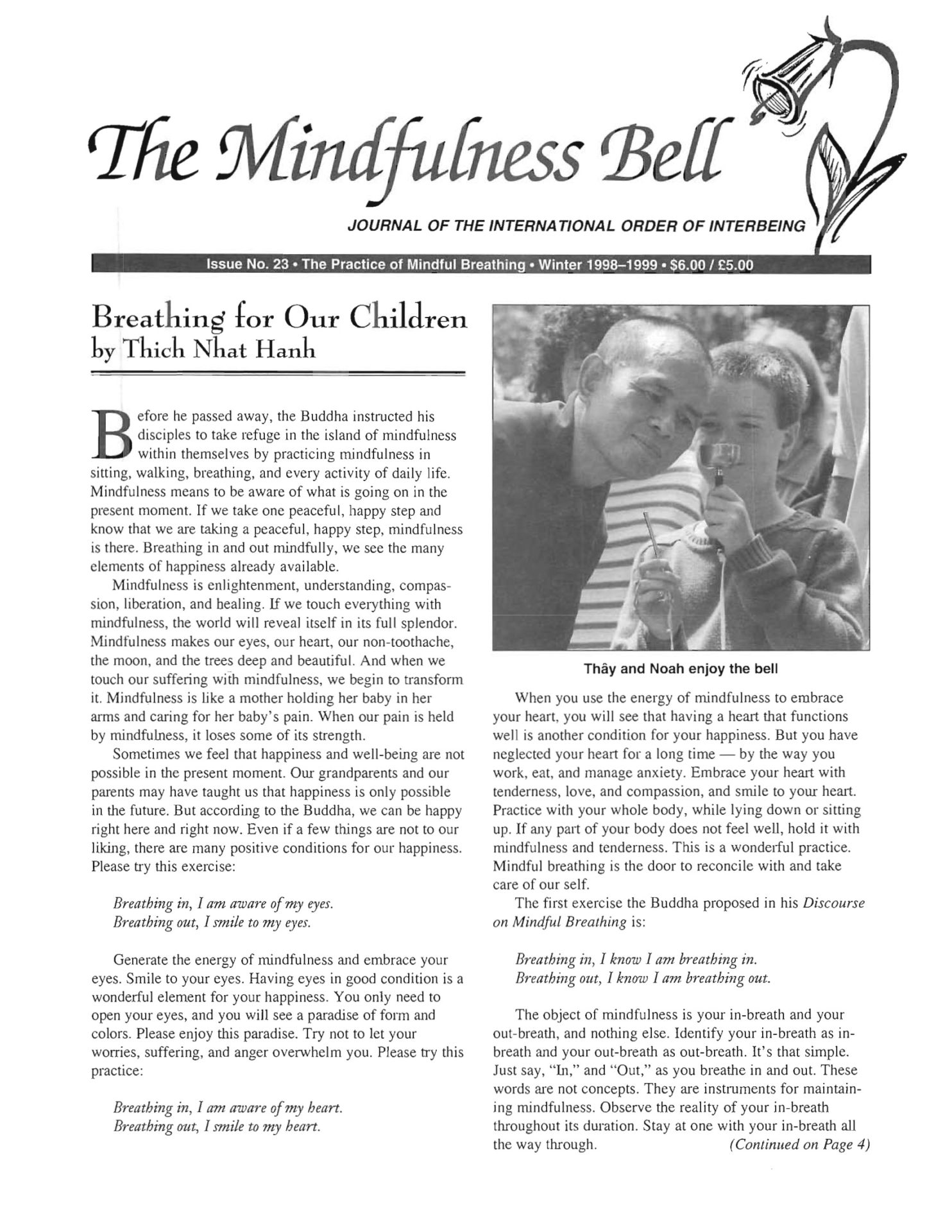By Jerry Braza and Robert Henderson
Our University Stress Management Class begins at 9:30 every Tuesday and Thursday morning. At precisely ten o’clock, the campus bell chimes and the entire class stops. We listen, breathe, and smile as we come back to the present moment. In that moment, with each respiration, we unite body, mind, and spirit in a kind of “re-spiriting,” thus embodying the very essence of the root of the word “respiration.”
By Jerry Braza and Robert Henderson
Our University Stress Management Class begins at 9:30 every Tuesday and Thursday morning. At precisely ten o'clock, the campus bell chimes and the entire class stops. We listen, breathe, and smile as we come back to the present moment. In that moment, with each respiration, we unite body, mind, and spirit in a kind of "re-spiriting," thus embodying the very essence of the root of the word "respiration."
During the class, students learn a wide variety of meditation and relaxation techniques. This includes discussion, exploration, and daily practice of mindfulness as a powerful form of stress reduction, as well as a metaphor for life. Students are discovering how mindful breathing can be a bridge between mind, body, and spirit. They are taught vaIious gathas such as "Breathing in, I calm my body. Breathing out, I smile," and are encouraged to develop their own phrases to accompany the breath during a variety of activities.
Initially, students noticed their breathing mainly during periods of physical activity. With the practice of mindful breathing, they report many positive changes. Breathing mindfully on the walk to the library facilitates a more relaxed mood needed to complete assignments. Mindful breathing while driving has helped combat forms of "road rage," so students don't get angry as often and arrive more relaxed. Breathing mindfully before a performance allows time for reflection and reduces anxiety. Students also report that mindful breathing helps them appreciate the natural beauty on campus, forget time constraints for the moment, focus before class, control anger, and cope with people and situations more calmly and effectively.
The class is discovering that the academic highway, often riddled with potholes, can also be smooth, peaceful, and scenic. In learning to stop, breathe, and smile, students are realizing that they are not separate from each other. Mindful breathing offers the space and awareness for deeper connections to others in the class and eventually, the campus community. Slowly, breath by breath, within this "academic family," a Sangha is blossoming.
Jerry Braza, True Great Response, is an Associate Professor at Western Oregon University, where he teaches Health Education. Robert Henderson is a graduate assistant at Western Oregon University.

